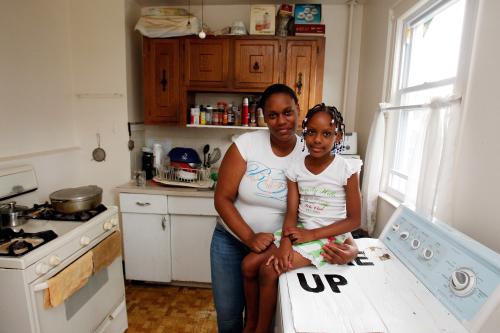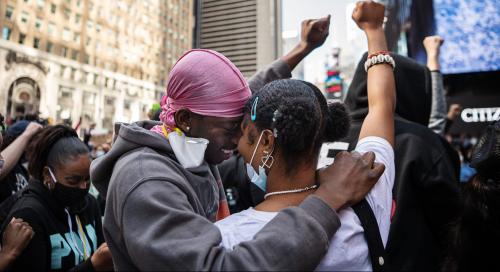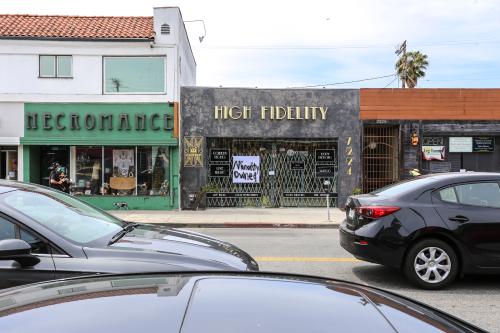The response to COVID-19 is not just record-level spending and borrowing. It may already constitute a wealth reallocation of historic proportions. The implications for equity, future growth, and climate are tremendous.
The health and economic crises – and in some cases, the government response to them – have not only been felt more acutely in particular businesses and industries. They have also disproportionately hurt black- and minority-owned businesses and the communities they serve.
As experts at watchdog organizations as well as our own respective organizations have pointed out, transparency and oversight are essential to ensuring a fair recovery that meets the needs of those who are struggling the most.
The 20th century transparency toolkit will not be enough by itself. Moving forward, the “holy trinity” of transparency and anti-corruption reform – fighting against waste, fraud, and abuse – needs a fourth element: striving for equity. The case for this approach remains fundamental; more efficient spending means money for other programs or lower taxes that benefit the average citizen.
To capture the differential impacts of federal actions, oversight institutions must ask and answer the right questions as a matter of racial, social and economic justice. They must be able to gather and generate the data they need and guide implementation at agencies. This will help inform citizens about who received the money, why, and who benefited from it.
Critics on the left and the right, as well as non-partisan observers have raised questions of distributional appropriateness in stimulus spending. The concern, then should not be partisan, but rather a basic element of policy analysis.
Examples from the CARES Act (Pub.L. 116-136) show why we need to better prioritize considerations about equity.
- Bond buying rejuvenated financial markets, but left citizens and small businesses behind. The CARES Act directs the Federal Reserve Bank (Fed) to buy bonds to support markets and employment. The Fed projects holding $9T in assets by the end of the year, a four-fold increase over the decade. The Fed began large capital bond buying well before it began supporting small and mid-sized companies. This came shortly on the heels of a regulatory process exempted from the Administrative Procedures Act seen by some to have favored large capital and the oil industry. This bears particular relevance to minority-owned businesses: according to McKinsey, because these businesses are smaller and have less access to traditional banks, they were considerably less able to access capital.
- Tax refunds allowed executives to profit from the crisis. The problem of inequality is not only that smaller or minority-owned businesses get less access to relief. The problem is also the disproportionate and sometimes questionable relief at the top. A legal, but questionable, example stands out. The CARES Act authorized oil companies to obtain tax refunds on net operating losses from prior years. As a result of this, Diamond Offshore Drilling, already in bankruptcy proceedings, saw an immediate benefit of $9.7M in tax rebates. Shortly thereafter, the company asked the bankruptcy judge to permit a coincident $9.7M bonus to nine executives. This was discovered through Securities and Exchange Commission Proprietorships or other legal vehicles are not subject to the same requirements of non-profits or publicly traded companies.
- Without accountability for misuse of funds, some companies applied for and received Paycheck Protection Program (PPP) loans despite having ready access to ample capital. The fiscal elements of stimulus ($2.6 trillion) include loans, grants and direct assistance to individuals and organizations. Intended recipients of PPP funding are those companies that, without federal assistance, would be unable to retain their workforces. However, some businesses that received hefty credit extensions or additional loans shortly before the pandemic hit also received a federal loan. For example, Legacy Housing, a Texas-based manufacturer of pre-built homes, announced on April 1 its access to $25 million in credit. On April 10, it received an additional $6.5 million S.B.A loan from the federal government. (In response to reporting, Legacy returned the $6.5 million in federal assistance, according to the company’s executive chairman. The chairman added that “Legacy is a highly leveraged company without cash on hand. Here was a way to get a cash infusion.”)
- Black and minority-owned businesses struggled to get relief under the CARES Act. While lawmakers intended for the program to prioritize “underserved” markets and business owners of color, independent analyses indicate that counties with higher ratios of black-owned businesses tended to have lower rates of PPP allocation.
- Reducing operational barriers for companies creates health, safety, and environmental risks for vulnerable groups. According to a recent cross-national comparison, the US has been found to have had one of the least green stimulus packages— with serious environmental justice and generational consequences. While a detailed list of tax expenditures is not available, a worldwide survey showed they include foregone revenue, subsidies, waivers of regulation, participation, and oversight, and weakened safety or environmental liability. These non-financial elements of stimulus are estimated at $298 billion and may disproportionately benefit industries which do significant damage to the environment and human health. Evidence shows that such environmental damage is most severe in communities of color.
- Another questionable tax expenditure: the rate of depreciation for most commercial real estate was lowered from 39 to 15 years. It is unclear how this will affect federal coffers, how this addresses the effects of COVID-19 and whether such generous changes in tax code will sunset after time.
Despite strong work by some reporters, think tanks, and some legislators, no official agency is tasked with identifying whether money reached those individuals, businesses, and communities hardest hit by the pandemic and its economic effects.
It is not enough to have non-profits and the media sector ask questions about who benefits from record spending. It requires big data and the stamp of official, impartial review, and clear guidance for civil servants making policy.
The Pandemic Response Accountability Committee (PRAC) has taken some positive steps in tracking who received major sources of spending. (See figure below for their reporting.) While a good start, many of the categories leave questions about whether these benefitted the most affected or the most connected.
FIGURE: A promising start: PRAC reporting on the destination of US Stimulus Money

Various reforms could be undertaken to monitor the distributional impacts of the recovery.
- Create or adapt oversight institutions: This could require a new institution (an “Office of Distributional Impacts”) or modifying an existing institutional mandate (such as OMB or the PRAC), not necessarily requiring legislation.
- Track costs and benefits for minority communities: A core aspect of these institutions’ mandates would be public reporting on distribution of costs and benefits of federal actions across race, class, gender, generation, geographic region, and size of enterprise. A variety of tools and methods could be used, whether integrated into existing informational assessments (environmental or cost-benefit analysis) or as standalone documents.
- Develop new standards of adequacy: Early stages of reporting might focus only on whether benefits went to communities with the greatest COVID-19 impacts. A more complex process might report on whether costs and benefits change depending on the discount rate. Over time, standards of adequacy and quality would develop.
None of this would predetermine whether a program should be undertaken. Rather, like other forms of impact assessment, this would be a set of responsibilities and processes to identify, predict, evaluate, and potentially mitigate the distributional effects of an action or major decision.
Americans deserve transparency about whether their money was leveraged effectively. While many have done yeoman’s work of researching these difficult issues, it should not primarily remain the work of non-governmental actors alone to ask basic questions about whether tax dollars are driving people together or apart.
Joseph Foti is the Chief Research Officer of the Open Government Partnership. He leads the Analytics and Insights team which is responsible for major research initiatives, managing OGP’s significant data resources, and ensuring the highest quality of analysis and relevance in OGP publications.
Ambassador Norman Eisen (ret.) is a senior fellow in Governance Studies at Brookings and an expert on law, ethics, and anti-corruption.








Commentary
A missing ingredient in COVID oversight: Equity
November 13, 2020